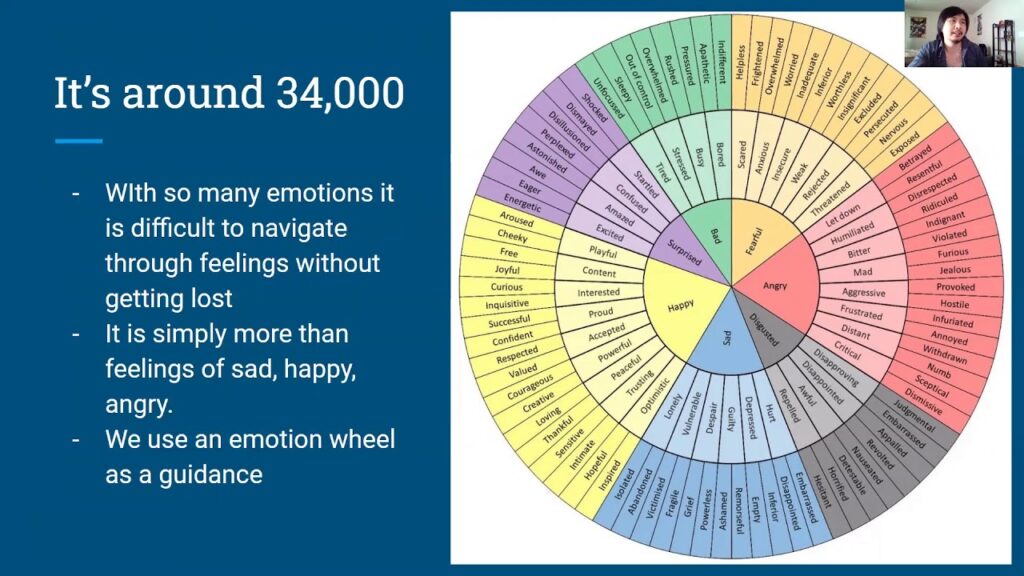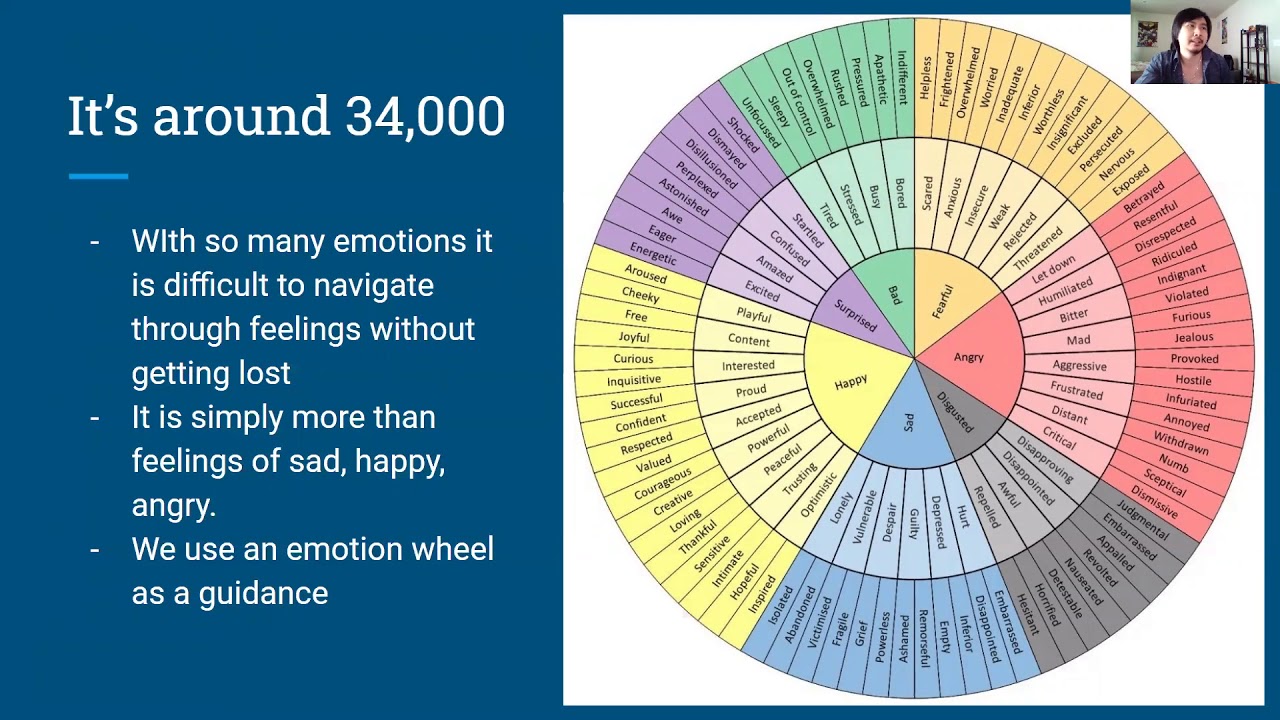
Navigating the Labyrinth of Emotions: Understanding and Utilizing the Feelings Wheel
Human emotions are complex and multifaceted, often defying simple categorization. The feelings wheel emerges as a powerful tool to dissect, understand, and articulate these intricate emotional states. This article delves into the concept of the feelings wheel, its origins, its practical applications, and how it can be a valuable asset in personal and professional development.
The Genesis of the Feelings Wheel
The feelings wheel, in its modern form, is largely attributed to Dr. Gloria Willcox, who developed it in the 1980s. Willcox’s intention was to create a visual aid that could help individuals identify and express their emotions more accurately. Her original design categorized emotions into primary, secondary, and tertiary levels, radiating outwards from a core set of fundamental feelings. This hierarchical structure provides a framework for exploring the nuances of emotional experience.
Building on Willcox’s work, other psychologists and therapists have adapted and refined the feelings wheel. One notable adaptation is the feelings wheel developed by Dr. Robert Plutchik, known as the Wheel of Emotions. Plutchik’s model proposes eight basic emotions – joy, trust, fear, surprise, sadness, disgust, anger, and anticipation – arranged in a circle. Combinations of these primary emotions give rise to more complex feelings.
Anatomy of a Feelings Wheel
A typical feelings wheel is visually structured like a color wheel or a dartboard. At the center are the core emotions, such as happiness, sadness, anger, fear, and surprise. Moving outwards, each section branches into more specific and nuanced feelings related to the central emotion. For example, under ‘anger,’ you might find feelings like frustration, irritation, rage, or resentment. The outermost layer contains even more granular descriptions, providing a rich vocabulary for expressing emotional states. The feelings wheel allows individuals to pinpoint exactly what they are feeling and communicate those feelings effectively.
Practical Applications of the Feelings Wheel
Enhancing Emotional Intelligence
One of the primary benefits of using a feelings wheel is its ability to enhance emotional intelligence. By regularly consulting the wheel, individuals become more attuned to their internal states and develop a broader emotional vocabulary. This increased self-awareness is crucial for managing emotions effectively and responding to situations with greater emotional maturity. [See also: Improving Your Emotional Quotient]
Improving Communication
Clear and effective communication relies on the ability to accurately express one’s feelings. The feelings wheel provides a structured framework for identifying and articulating emotions, making it easier to communicate needs, boundaries, and concerns. This is particularly valuable in interpersonal relationships, where misunderstandings often arise from a lack of emotional clarity.
Facilitating Therapy and Counseling
Therapists and counselors frequently use the feelings wheel as a tool to help clients explore their emotions. It can be particularly helpful for individuals who struggle to identify or express their feelings verbally. The visual nature of the wheel makes it accessible and less intimidating, allowing clients to gradually open up and gain insight into their emotional patterns. It can be a starting point for deeper exploration of underlying issues and traumas. The feelings wheel provides a safe and structured way to begin this process.
Conflict Resolution
In conflict situations, understanding the emotions involved is essential for finding constructive solutions. The feelings wheel can help individuals identify the underlying emotions driving their behavior and the behavior of others. This understanding can lead to more empathetic and productive communication, reducing the likelihood of escalation and promoting collaborative problem-solving. By identifying the root feelings, you can address the core issues rather than just the surface-level arguments.
Personal Growth and Self-Discovery
The feelings wheel is also a valuable tool for personal growth and self-discovery. By regularly reflecting on their emotional experiences and using the wheel to identify and name their feelings, individuals can gain a deeper understanding of themselves. This self-awareness can lead to greater self-acceptance, improved self-esteem, and a more fulfilling life. Understanding your feelings is the first step to managing them.
How to Use a Feelings Wheel Effectively
Using a feelings wheel is a simple yet powerful process. Here’s a step-by-step guide:
- Identify the Situation: Begin by identifying the specific situation or event that triggered the emotional response.
- Start with the Core Emotions: Refer to the center of the wheel and identify the primary emotion that resonates most strongly with your experience.
- Explore the Nuances: Move outwards from the core emotion and explore the more specific feelings associated with it. Consider which of these nuanced feelings best describes your emotional state.
- Reflect and Journal: Take time to reflect on the identified feelings and journal about your experience. Consider why you are feeling this way and what actions you can take to address your emotions.
- Practice Regularly: The more you practice using the feelings wheel, the more attuned you will become to your emotional landscape. Make it a regular part of your self-reflection routine.
Limitations and Considerations
While the feelings wheel is a valuable tool, it’s important to acknowledge its limitations. It is a simplified representation of complex emotional experiences and may not capture the full range of human emotions. Additionally, cultural differences can influence how emotions are expressed and perceived, so it’s important to consider the cultural context when using the wheel. The feelings wheel should be used as a guide, not as a definitive authority on emotions.
Furthermore, some individuals may find the feelings wheel overwhelming or triggering, especially if they have a history of trauma or emotional dysregulation. In such cases, it’s important to approach the tool with caution and seek guidance from a qualified mental health professional. The process of identifying and exploring feelings can bring up difficult emotions, so it is important to have a support system in place.
The Future of Emotional Literacy
As our understanding of emotions evolves, so too will the tools we use to explore them. The feelings wheel is likely to remain a valuable resource for enhancing emotional intelligence and improving communication. Future developments may include incorporating technology to create interactive and personalized feelings wheels that adapt to individual needs and preferences. The ultimate goal is to empower individuals to navigate the complexities of their emotional lives with greater confidence and awareness. Emotional literacy is becoming increasingly important in a world that demands empathy, understanding, and effective communication. The feelings wheel is just one tool in the ongoing journey toward greater emotional well-being. Understanding your feelings is a lifelong process, and the feelings wheel can be a valuable companion along the way.
Conclusion
The feelings wheel is a versatile and accessible tool for understanding and expressing emotions. Its visual structure and hierarchical organization make it easy to identify and articulate complex emotional states. Whether used for personal growth, improved communication, or therapeutic purposes, the feelings wheel can be a valuable asset in navigating the labyrinth of human emotions. By embracing emotional literacy and utilizing tools like the feelings wheel, individuals can cultivate greater self-awareness, build stronger relationships, and lead more fulfilling lives. In a world that often prioritizes logic and reason, the feelings wheel serves as a reminder of the importance of acknowledging and understanding our emotions. Taking the time to understand your feelings is an investment in your overall well-being.

